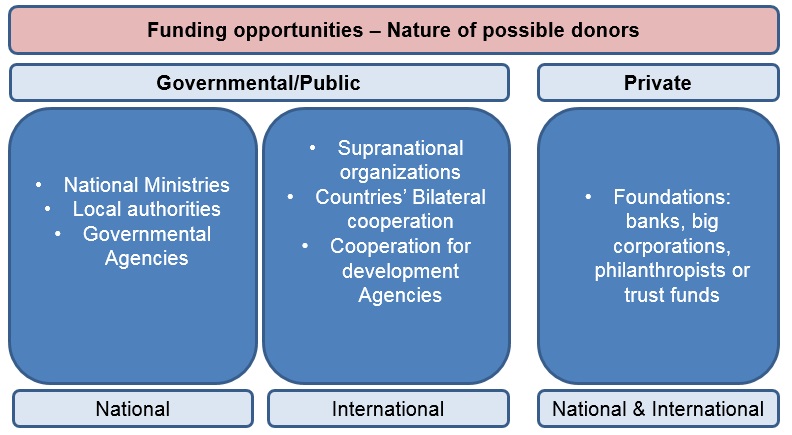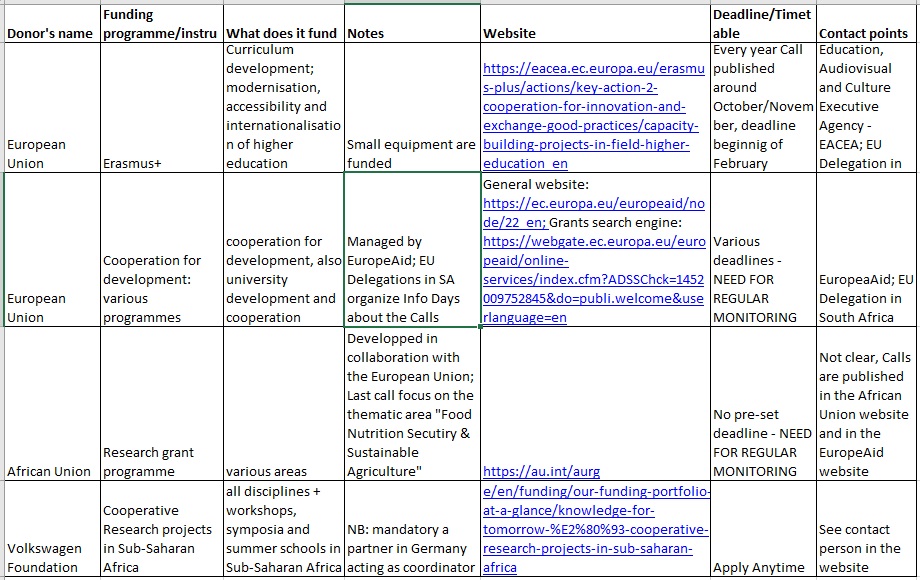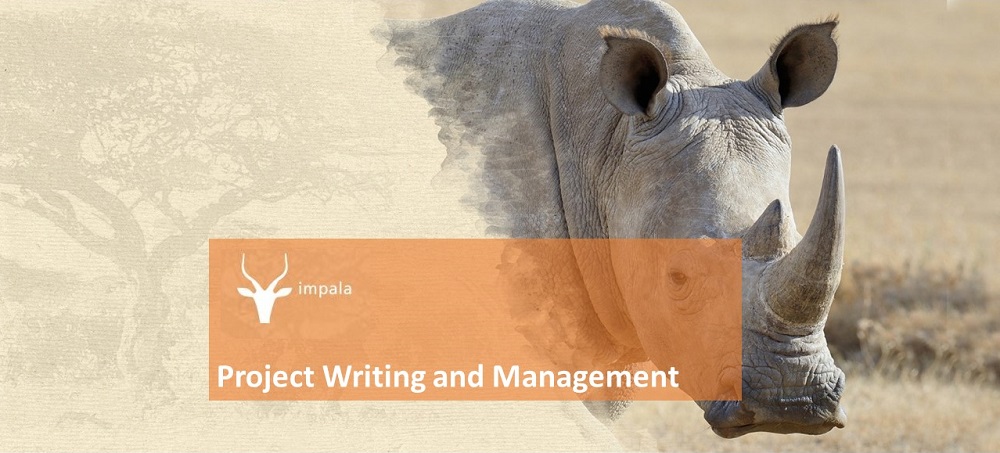Is your institution looking for funding opportunities? The good news is that a variety of donors offer Higher Education Institutions instruments for funding diverse project ideas or individual fellowships. Opportunities can take a wide range forms, and funding might involve sponsorship, tenders or competitive grants advertised through calls for applications published on donor websites.
Don’t know where to start in this funding jungle? A good starting point is to create a ‘gold’ list of donors.
Know what to search for
Funding is pivotal in donors’ missions, objectives and interests. As a result, it makes sense to start by thinking about what kinds of donor align with your own mission, objectives and goals. There are many different types of donor out there, funding research, modernization and innovation of education, internationalization, outreach activities and the development of higher education systems.
Which donors might be interesting for South African HEIs?
Start by thinking about the type of potential donors. We can find both public and private donors, who have a national or international outreach:

Beyond the ministries and governmental agencies that focus on education and research, the Ministry of Foreign Affairs may also be a donor that can help your institution liaise with international partners for actions focusing on university cooperation, international strategic partnerships for innovation and collaborative research, and development cooperation. Depending on the country organization, local government (e.g. Gauteng Province) may also be a potential donor.
At international level, you may find donors or facilitators among the supranational organizations your country is involved in, such as the Southern Africa Development Community, the African Union, and the United Nations and its agencies.
A second source of funding at international level is bilateral cooperation. University and scientific cooperation is usually coordinated by diplomatic representations, as is the case in the Italy-South Africa joint research project, or by development agencies, such as the Swedish International Development Cooperation Agency (Sida), the Norwegian Agency for Development Cooperation (Norad), the UK Department for International Development (UKAid) and the Italian Agency for Development Cooperation (AICS). Some countries have agencies that deal specifically with university cooperation, such as Germany’s DAAD (German Academic Exchange Service).
The European Union is another important donor, with flagship funding programmes in the fields of research (e.g. Horizon2020), education (e.g. Erasmus+) and cooperation for development (e.g. EuropeAid programmes) that open up opportunities for African HEIs. The programmes often have an international cooperation dimension, which means that African institutions are eligible applicants. Examples include the Erasmus+ Capacity Building in the Field of Higher Education and the European & Developing Countries Clinical Trials Partnership (EDCTP) funded under Horizon2020. The EU also works with other supranational organizations, like the African Union research grant programme.
These are all examples of government and public actors, but a donor can be also a private entity. Some examples of private donors are foundations connected to actors such as banks, firms and big corporations, philanthropists and trust funds. Foundations often concentrate on a specific challenge or domain, so this will be a crucial dimension of your donor search. Two examples are the Ford Foundation (fighting inequalities) and the Michael J. Fox Foundation (research on Parkinson’s disease). Even though foundations usually have a territory of reference, they may allow participation from abroad – often on the condition that partnerships are set up with national institutions. See for example the Volkswagen Foundation in Germany.
What does a list of donors look like?
A list of donors includes the core information useful for monitoring funding opportunities effectively. Governmental/public donors usually adopt multiannual programmes and can generally be approached only by submitting a project proposal within a structured call for application. The opportunities are quite regular in terms of availability and knowing these timetables is therefore of strategic importance. Other donors, particularly private ones, don’t have strict deadlines and don’t require much paperwork in the first step (e.g. letters of inquiry). As a consequence, they are less predictable and need more monitoring. Deadlines and notes about application methods are definitely relevant for inclusion in the list. What else?
– Name of the donor
– Name of the programme(s)
– What does it fund
– Website
– Deadline/timetable
– Contact points

Where can I find this information?
Almost all donors have dedicated sections for promoting and marketing their funding opportunities. Look for sections like ‘Opportunities’, ‘Programmes’, ‘What we fund’, ‘Open competition’, ‘For researchers’ or simply ‘Funding’. Apart from easily identifiable donors (e.g. the EU, the UN, the NRF), there are countless actors and opportunities in the form of foundations and specific funding programmes (e.g. EDCPT) . In these cases you will probably start by searching the internet using key words such as ‘foundations funding research’.
Once you have identified a donor, a good practice is to familiarize yourself with the organization by reading all the information provided online and on social networks: its mission, its structure, its executive programmes and funding instruments, its policies, agreements between your home country and the donor. A second good practice is to find out whether the donor has local offices in your home country that you can contact directly or that organizes local info days (e.g. EU Delegations; Ford Foundation grant makers).


